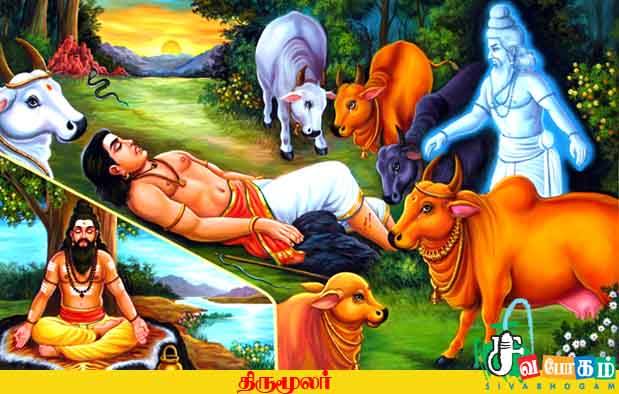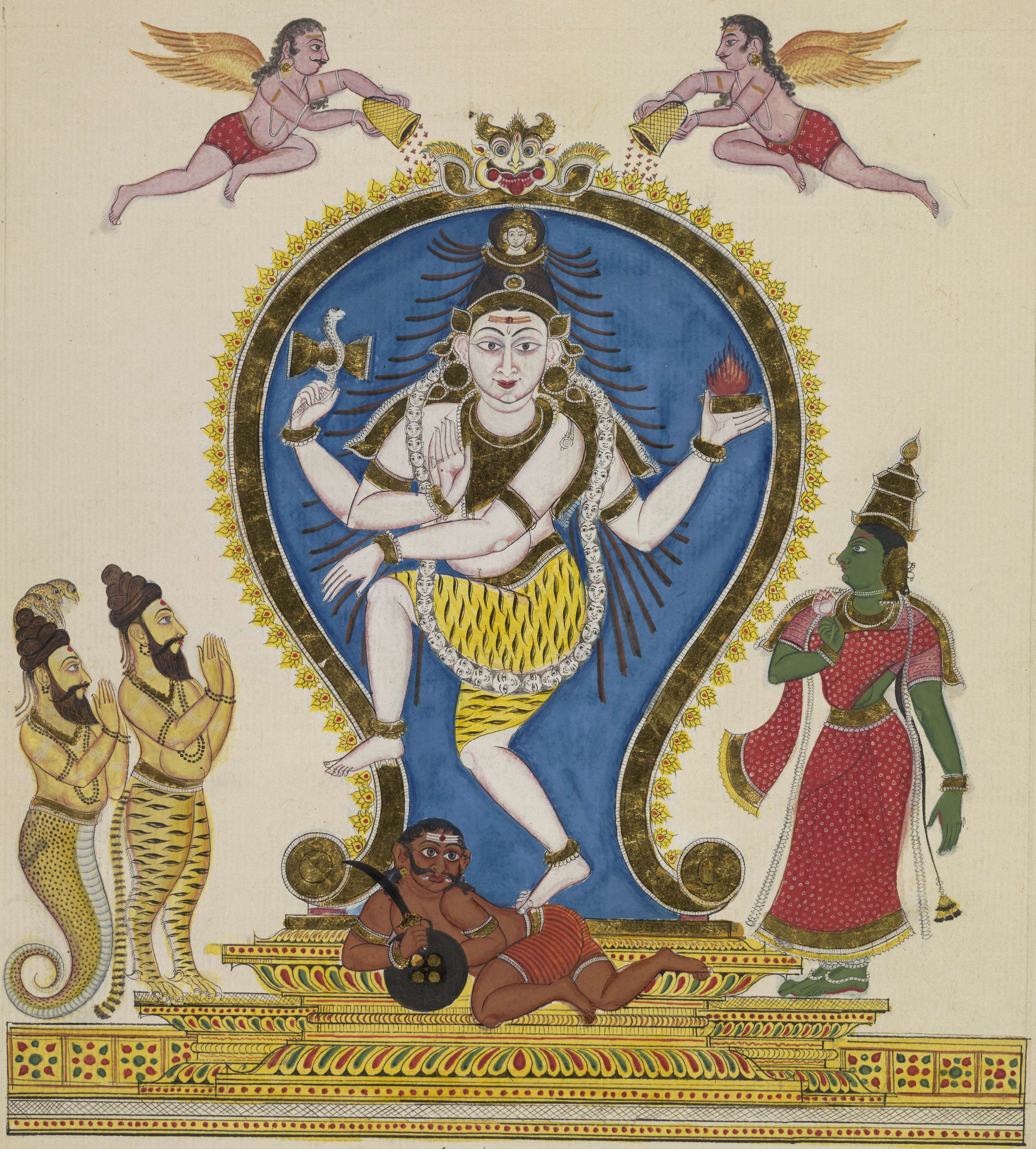Tīrtha Series - 5b: Thirumular life story and works
Here is the link to Tirtha Series Master Database
This is the sequel to:
Life Story of Thirumular (Nandi Deva, Shiva):
(Common Version, slight variations here and there, but this is the general theme)
Sundarar Nathar was a disciple of the great Nath guru Maharishi Nandinatha in the Himalayas. Guru Nandhi Natha Devar preached and taught the Nine Veda Agamas (Vedic traditions) that Lord Shiva first taught to Parvathi and then to Nandhi Devar (The divine bull, guardian of Lord Shiva). The great Siddha Nandi Natha blessed his disciple, Sundarar Nathar, and instructed him to undertake the arduous journey to the South of India, to spread Shaiva Siddhanta (attaining liberation through the grace of Lord Shiva) Having achieved the eight siddhis (spiritual powers) and perfect enlightenment at the feet of his Nath guru Maharishi Nandinatha, Rishi Sundara Nathar later became known as Rishi Tirumoolar. He joined the venerable Nath lineage and became one of its most celebrated yogis. Of his gratitude to his guru Nandi he wrote in Tirumantiram:
- By Nandi’s grace, master I became;
- By Nandi’s grace, I sought Mular;
- What can happen without Nandi’s grace?
- I remained, seeking to expound Nandi’s path.
- By the grace of Nandi, I sought Mular;
- By the grace of Nandi, I became Sadasiva;
- By the grace of Nandi, I became united with supreme wisdom;
- What I am is by the grace of Nandi.
Following his initiation, Sundara Nathar was sent by Maharishi Nandinatha to revive Saiva Siddhanta in the South of Bharat (India). Taking leave of Nandinatha and his brother monks, Sundara Nathar began his life’s mission, to bring the true knowledge of the Agamas (manuals for worship, rituals) and Vedas to the southern parts of India in the Tamil language. It was a long and arduous journey in those days, thousands of kilometers by foot on simple roads and paths. Scripture notes that Rishi Sundara Nathar took pains to visit the sacred Shaiva centers en route, beginning with Kedarnath in the North, a remote stone shrine in the snowy Himalayan peaks, at the fountainhead of the river Ganga, near the border of Tibet. Now, apart from his Sat Guru, he sat at the headwaters of the river Ganga. His life’s work lay ahead, his years of learning were complete, and his mystical experiences were swirling all about. He would later write of these early realizations, of the four forms of Shaivism, the four stages, the four relationships the soul has with God, the four realizations attainable, the four aspects of the descent of grace, and the power of true renunciation of the world.
Sundara-nathar employed parasarirah siddhi to leave his body and enter Moolan (a sheperd) body to help the cow herd return to their shelter and by the time, he returned, some people have burned the Siddha body of Sundara-nathar.
Then, he realized, Shiva played the trick and wanted Sundara-nathar to achieve siddha body again from Moolan's body and show the world that it is possible with any body. Sounds similar to Madhva's story right, some variations thought but the mssion looks simlar. That's how Sundara-nathar became Thiru-moolar or Thiru-mular.
(Thiru in Tamil is same as Shri in Sanskrit or Divine Grace in English)

-------------------------------------------------------------------------------------------------------------------------------------------------------------
Also, in his works, I have learnt that an interesting story: Thirumular, Vyagrahapada (Tiger-feet), Patañjali (snake-feet) [see below picture as they both stand) learned Yoga along with other disciples from the great Yogic Guru Nandhi Deva and Shiva, as stated in Tirumular's Tirumandiram (Tantra 1).
Tamil verse: (Tirumular's Tirumandiram (Tantra 1))
Nandhi arulPetra Nadharai Naadinom Nandhigal Nalvar Siva Yoga MaaMuni Mandru thozhuda Patañjali Vyakramar Endrivar Ennodu (Thirumoolar) Enmarumaame
Translation:
We sought the feet of the Lord who graced Nandikesvara, The Four Nandhis, Sivayoga Muni, Patañjali, Vyaghrapada and I (Thirumoolar), We were these eight.

Reference:
- https://mydattatreya.com/thirumoolar/
- https://www.himalayanacademy.com/blog/taka/2009/07/11/story-of-saint-tirumular/
Side note: Both these links paint Thirumular and Patanjali as Monist but they are dualist (Dvaities), which are super evident from the very works. Ignore those monist claims and read the stories.
(Surprising fact while I writing this article, I learned the thirumular idol is at the feet of the Nataraja idol which is an exceptional case. Usually, it is the child-teenage saint Thiru-Jnana-Sambandha idol would be at the feet of Shiva)
------------------------------------------------------------------------------------------------------------------------------------------------------------
Thirumlar's work:
Thiru-manthiram (Sacred Mantra) is the work of Thirumular. He explained the Patanjali yoga sutra step by step in Tamil Language (one of the first to translate into the Tamil language). He is a great Siddha.
The Tirumantiram is divided into nine chapters, 9 tantras (tantirams):
- 1. Philosophical views and divine experience, impermanency of the physical body, love, education, etc.
- 2. Shiva's glory, His divine acts, classification of souls, etc.
- 3. Yoga practices according to the eight-angled way of Patanjali. Also refers to Vaasi Yoga
- 4. Mantra, tantra, etc.
- 5. Various branches of Saiva religion; the four elements of Shaiva Siddhanta.
- 6. Shiva as guru bestowing grace and the devotee's responsibility.
- 7. Shiva linga, Shiva worship, self-control.
- 8. The stages of soul experience.
- 9. Panchadsara manthiram, Shiva's dance, the state of samadhi.
I am very happy and relieved mentally to have composed both these articles for my father!
My beloved father!
En Appa!
